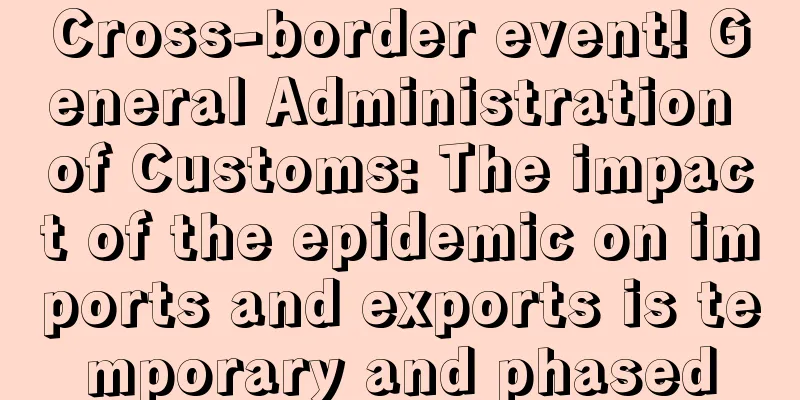Big news! Amazon is reducing the burden on sellers and officially canceling a fee!

|
As Black Friday and the online shopping promotion are approaching, sellers need to make inventory management strategies in advance to ensure that there are sufficient products to sell during the promotion period. On July 30, a news release from Amazon’s backend stated: Starting from July 1, 2024, in order to help Amazon sellers simplify operations and manage inventory more efficiently during the peak season, Amazon will cancel excess storage fees. This policy adjustment applies to sellers in the United States, the European Union, the United Kingdom, and Canada . Sellers in other sites will need to wait for further notice. According to Amazon's announcement, starting from July 1, 2024, sellers will no longer have to pay additional overage fees even if their inventory exceeds the allocated storage capacity. What is the excess storage fee: If the seller's inventory (excluding unfulfilled shipments) in the Amazon fulfillment center exceeds the capacity limit, in addition to the monthly storage fee and the overage inventory surcharge (if applicable), Amazon will also charge the seller an "inventory storage excess fee". Previously, the storage overage fee was based on the number of days the storage limit was exceeded, and Amazon would charge a monthly fee of $10 per cubic foot for inventory that exceeded the storage limit. It is calculated based on the daily average volume (in cubic feet ) of all space occupied by the seller's inventory in Amazon's fulfillment centers that exceeds the storage limit , which has placed a considerable financial burden on many sellers. In the past, the sudden drop in storage capacity during the peak season forced many sellers to bear high excess storage fees, affecting inventory management and capital turnover. Amazon's cancellation of excess storage fees is undoubtedly good news. It will undoubtedly reduce the burden on sellers who have already incurred excess storage fees, and will also allow them to prepare more sufficient inventory in advance to cope with the upcoming peak sales season. However, in order to cope with possible warehouse capacity excess, sellers still need to adjust their inventory strategies in advance. You cannot blindly ship a lot of goods just because there is no excess inventory fee. You cannot be sure whether Amazon's policies will change in the future. You should arrange the replenishment quantity reasonably according to the inventory turnover of your own products, and try to replenish small quantities multiple times. This will speed up the sales and turnover of inventory to the greatest extent, and increase your inventory capacity. In addition to canceling the excess storage fees, the main purpose of Amazon’s announcement this time is to urge sellers to ship their goods! Because judging from the current speed at which Amazon's warehouses receive and put products on the shelves, it is indeed quite slow. In October and November, Amazon expects that storage capacity restrictions may be tightened, and the speed at which products are put on the shelves will only be slower , which may affect the normal operation of products during the peak season. If you don't want to be out of stock during the peak season, shipping as soon as possible is a top priority. Especially for those sellers who are used to shipping by sea, they can hurry up and ship the goods this month. In addition, Xiao Ant reminds sellers to avoid peak periods when shipping goods, which can also reduce the loss of goods. As for how much to ship, sellers can make estimates based on their usual sales or last year's sales data. In addition, sellers should note that they must not be blindly optimistic just because the excess inventory fee has been cancelled, because Amazon will still charge normal storage fees during the peak season. Amazon's storage costs are 2-3 times higher than usual during its peak season from October to December each year. These fees are also a considerable pressure on sellers, especially for those with serious inventory backlogs, who may be deducted hundreds of thousands of fees for storage fees. The peak season is approaching, and Xiao Ant would like to remind all sellers to be cautious when stocking up, especially for seasonal products, and to do a good job of inventory management, improve the IPI score, and avoid being charged high excess storage fees. |
<<: Amazon reported a large number of errors, and the system has bugged again...
>>: Amazon has added a new fee: advertising management fee!
Recommend
Amazon's new feature is online! The official subsidy is not small
Amazon recently launched a new Subscribe & Sav...
Amazon launches new shipment performance feature! Shipments exceeding standards may result in FBA restrictions!
▶ Video account attention cross-border navigation ...
What is a newbie? Newbie review
Waixinren is a professional cross-border industry ...
What is ASIC? ASIC Review
The Australian Securities and Investments Commissi...
Product infringement! 17 Chinese companies sued! 1500+ stores may be frozen!
Infringement incidents occur every year, especiall...
What is the Italian Tax Agency? Italian Tax Agency Review
The Agnzia Entrepreneurship Agency is the tax agen...
U.S. Candy Market Survey: Candy Sales Soar to $42 Billion in 2022
It is learned that according to the National Confe...
What is COD (Cash on Delivery) order business? COD (Cash on Delivery) order business review
COD (Cash On Delivery) means cash on delivery . 1....
Another hit! Export sales exceeded 500 million, and the demand for heating in Europe continues to be crazy!
It is learned that last week, Amazon released its ...
Amazon has integrated high-end gameplay, and new products can easily increase sales!
As we all know, new products face certain challeng...
What is Cloud Commerce Cross-border? Cloud Commerce Cross-border Review
Yunshang Cross-border is a leading mobile Internet...
Adobe's latest data: Americans' online shopping spending has reached $1.7 trillion since the outbreak
It is learned that on March 15, Adobe announced at...
What is Woot? Woot Review
Founded in 2004, Woot is a well-known group buying...
Comparison of Amazon and Walmart’s third-party marketplace in 2023
Walmart has always regarded Amazon as its main com...
What is Price Spectre? Price Spectre Review
Price Spectre is an automated pricing agent for eB...









